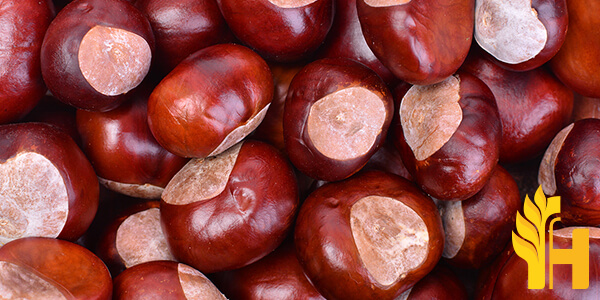Marron price

Where to buy and sell Marron, lowest (cheapest) and highest price.
check offers buy sell MarronToday price for MarronMarron wholesale prices 2022
The Current commodity price of Marron per kg, pound in the world in the global markets
chestnut catty
Price range: 2.5 - 3 CNY / 0,60 kg | Market: suzhou nanhuan bridge market | Date: 2026-01-19
oil chestnut catty
Price range: 4 - 7 CNY / 0,60 kg | Market: suzhou nanhuan bridge market | Date: 2026-01-19
chestnut catty
Price range: 2.5 - 3 CNY / 0,60 kg | Market: suzhou nanhuan bridge market | Date: 2026-01-15
oil chestnut catty
Price range: 4 - 7 CNY / 0,60 kg | Market: suzhou nanhuan bridge market | Date: 2026-01-15
chestnut catty
Price range: 3 - 4 CNY / 0,60 kg | Market: suzhou nanhuan bridge market | Date: 2026-01-12
chestnut kg
Price range: 2.88 - 5 EUR / 1 kg | Market: Supply Central Markets Sevilla | Date: 2026-01-12
oil chestnut catty
Price range: 5 - 6 CNY / 0,60 kg | Market: suzhou nanhuan bridge market | Date: 2026-01-12
chestnut catty
Price range: 3 - 4 CNY / 0,60 kg | Market: suzhou nanhuan bridge market | Date: 2026-01-08
oil chestnut catty
Price range: 5 - 6 CNY / 0,60 kg | Market: suzhou nanhuan bridge market | Date: 2026-01-08
chestnut catty
Price range: 3 - 4 CNY / 0,60 kg | Market: suzhou nanhuan bridge market | Date: 2026-01-07
oil chestnut catty
Price range: 5 - 6 CNY / 0,60 kg | Market: suzhou nanhuan bridge market | Date: 2026-01-07
chestnut kg
Price range: 2.45 - 3.5 EUR / 1 kg | Market: Supply Central Markets Sevilla | Date: 2026-01-05
chestnut kg
Price range: 4.8 - 6.5 EUR / 1 kg | Market: Supply Central Markets Sevilla | Date: 2025-12-29
chestnut catty
Price range: 3 - 3.5 CNY / 0,60 kg | Market: suzhou nanhuan bridge market | Date: 2025-12-04
Marron
The chestnut tree, any of several species in the genus Castanea in the beech family (Fagaceae) and given the common name chestnut. The word also refers to the edible nuts borne by these trees. The 11 living species are usually divided into 3 groups: one group is made up of European and Asian chestnut trees, some of which are cultivated for ornament or lumber; the second group is Chinese chestnut (C. mollissima), and the third group is made up of small wild American chestnuts (Castanea dentata). The last species stands little chance of surviving because it has been almost totally wiped out by a disease caused by an Asian fungus that was accidentally introduced into the United States. Worldwide, some 600 species of Castanea are found in regions from western Asia to eastern North America. European and Asian chestnuts have rounded leaves with coarsely toothed edges. They are adapted for growing in temperate climates but can be damaged by winter temperatures that drop below −20 °C (−4 °F). They are very susceptible to a blight caused by the fungus Cryphonectria parasitica (formerly Endothia parasitica), which was accidentally introduced into North America from China. The diseased trees die within a few years of infection. American chestnut (C. dentata) has leaves with rounded lobes and bristly teeth along the edges. The tree is sometimes called a chinquapin, from the name of another American chestnut species (C. pumila), which has similar leaves but smaller nuts. The Chinese or Formosan chestnut (C. mollissima) has only a faint indentation on the leaf margin. This species is able to live in harsh environments at high elevations and is resistant to chestnut blight. The nuts are as large as those of C. dentata but generally do not taste as good as those of European varieties because they contain a significant amount of tannin, which gives them a bitter flavour. Chestnut trees are widely planted as ornamental shade or forest trees. The Spanish or European chestnut (C. sativa) is one of the most valued trees for its handsome bark and its edible nuts, which are sold in local markets throughout Europe where they are known as marrons. Several species are prized for their wood, notably C. crenata, which is used for furniture and veneers.Global marron production
According to the Food and Agriculture Organization of the United Nations, Brazil was the world’s largest producer of marrons glacés in 2013, with a production volume of approximately 33,000 metric tons. France was a distant second, with a production volume of just over 10,000 metric tons. Another notable marron glacé producing countries include Italy, Switzerland, and Belgium. Marrons glacés are chestnuts that have been preserved in sugar syrup. They are a popular treat in many European countries, particularly during the holiday season. Marrons glacés can be eaten on their own or used as an ingredient in other desserts and pastries. While marrons glacés are typically associated with European cuisine, they are also popular in Asia. In Japan, for example, marrons glacés are often served as a dessert after a meal. The global marron glacé market is expected to grow in the coming years, due to the increasing popularity of this sweet treat. If you are interested in entering the marron glacé market, there are many opportunities for you to do so.Download our new
Husfarm App
Stay up to date with the current prieces of agricultural products all over the world.
Do you want to sell agricultural products?
Are you an Agricultural processor looking for high-quality products to buy?
Post an ad for FREE!
